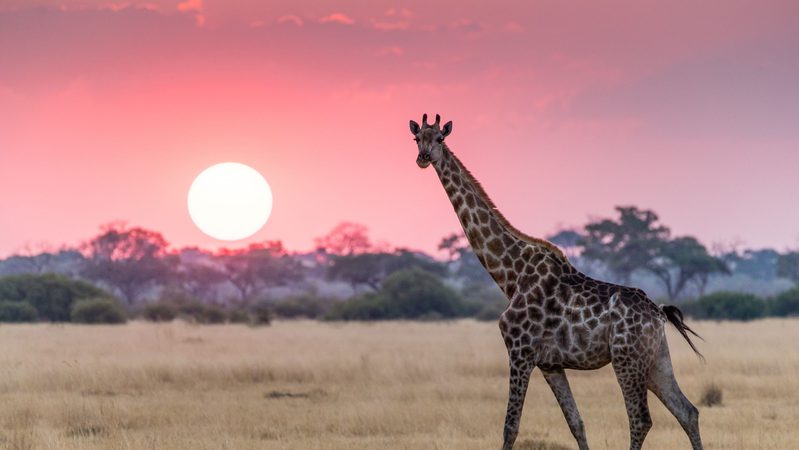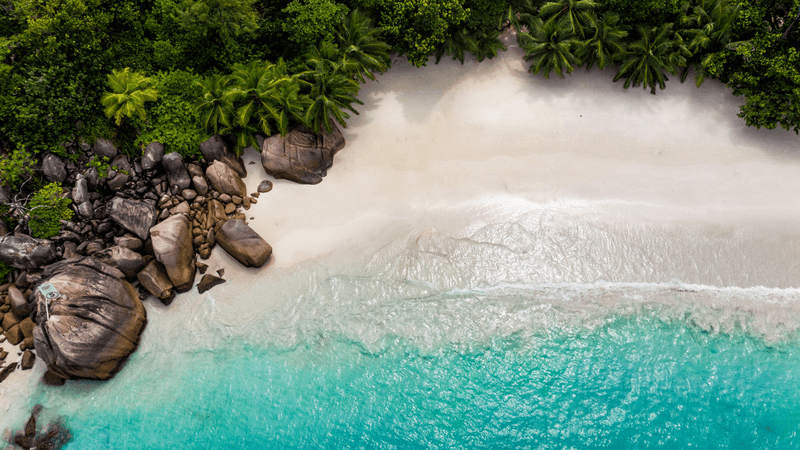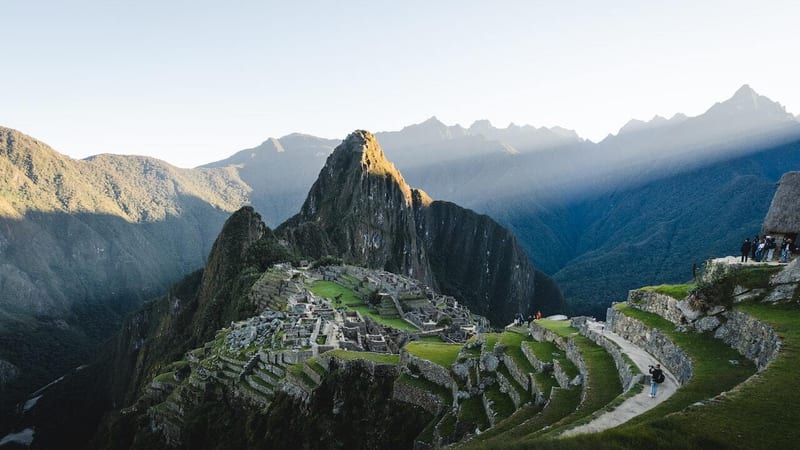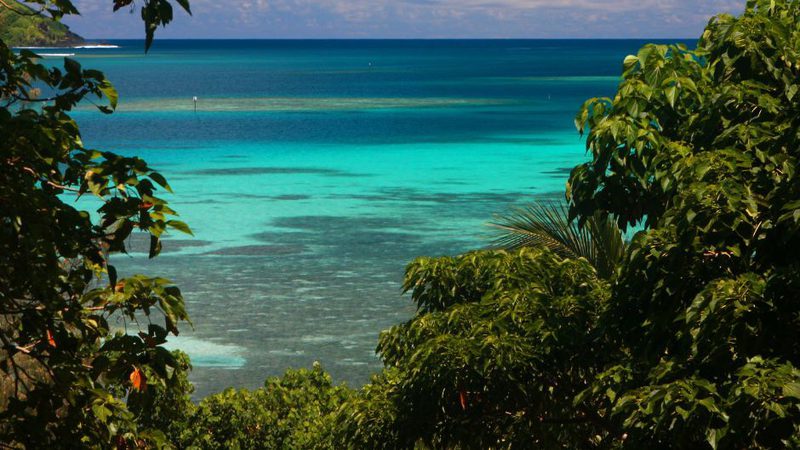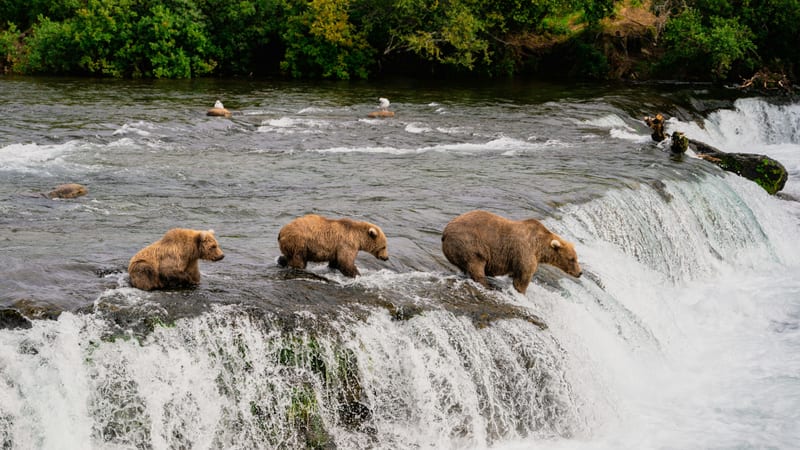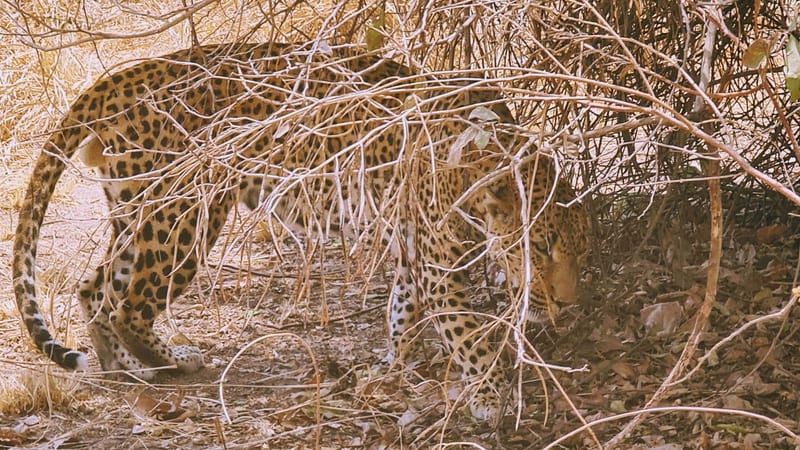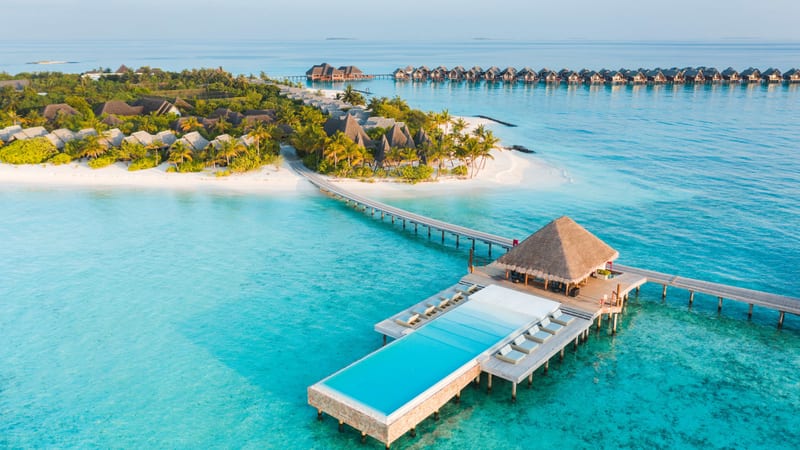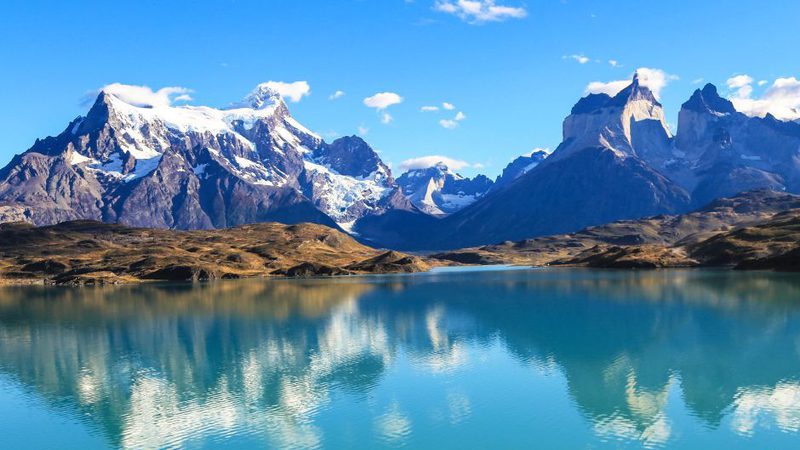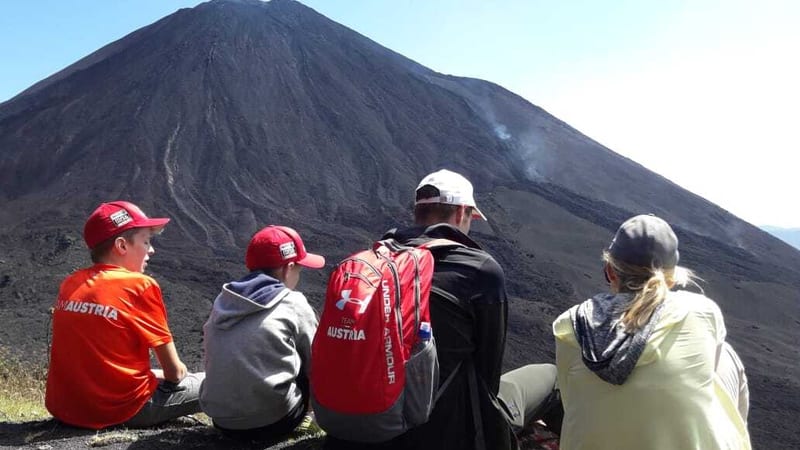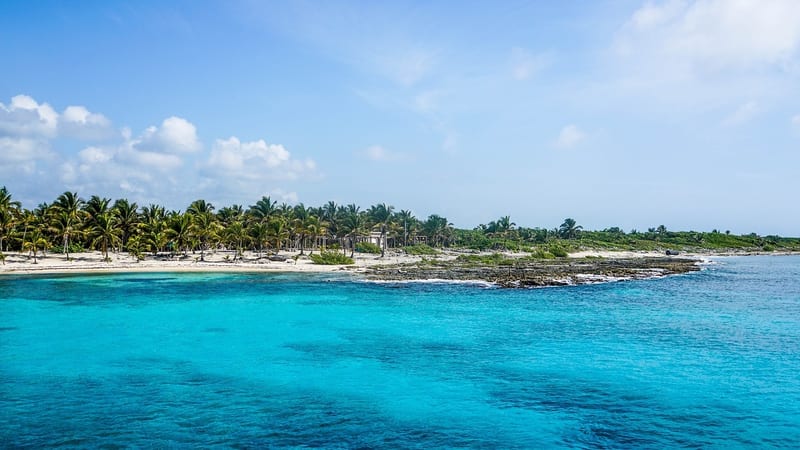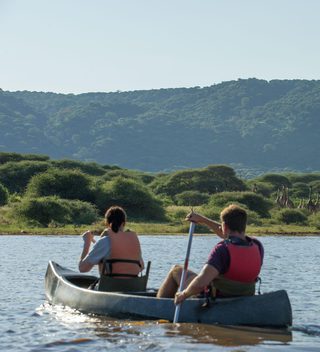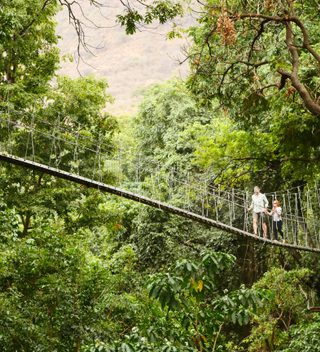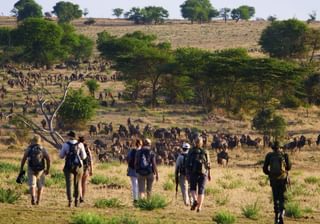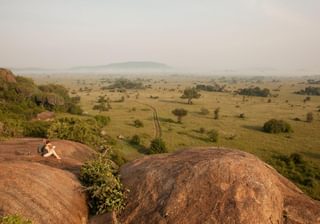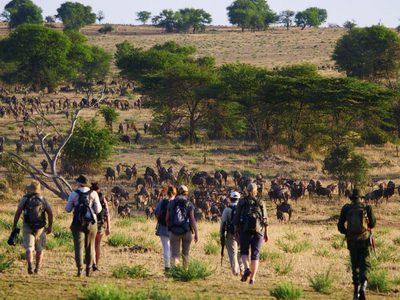
Tanzania safaris offers some of the best game viewing in all of Africa – see the Big Five in the Ngorongoro Crater, watch the Great Migration cross the Serengeti and see
meandering river safaris in Nyerere National Park (previously called Selous Game Reserve). All of these experiences are incredible, but the opportunity to get out of your vehicle and witness them on foot is a unique and unforgettable experience.
While Tanzania is not as well known as Zambia or Zimbabwe for its walking safaris, they are quickly growing in popularity and there are some excellent opportunities to consider.
Walking safaris are available only in certain locations and can be a day trip of a few hours – returning to your camp to sleep – or across several days, staying in a new location each night.
Where can you do a walking safari in Tanzania?
Tanzania is a ginormous country, so visitors tend to visit either the north or south of the country, but rarely do both in the same trip, so to help you decide on where to do your walking safari in Tanzania, we have broken down the areas by north and south.
Northern Tanzania
Lake Manyara
Best for an active family safari and range of activities
This is the perfect spot for a short walking safari or bush walk if you’re looking to test the waters and return to your camp for meals and sleep.
Walking along the shores of Lake Manyara, you have the chance to get close to the flamingos for which the park is famed. The area is renowned for its excellent bird-watching opportunities in general, with more than 400 different species being recorded. You will also have the chance to discover wildlife tracks, identify animal poop, get excited about smaller creatures such as insects and learn about the fauna that lives in the park.
There are also many other activities that you can try, which makes Lake Manyara perfect for those looking to do an active family safari. Climb waterfalls, relax in rock pools or try canoeing on the lake while watching animals drinking from the shore. Mountain bike through rural villages, giving you a unique chance to see Tanzanians living everyday life, or visit the country’s first treetop walkway for an entirely new perspective of the forest – a sky-high adventure bringing you eye-level with monkeys, butterflies and birds.
Tanzania family adventure: 12-day family from £4,670 per adult and £2,468 per child.
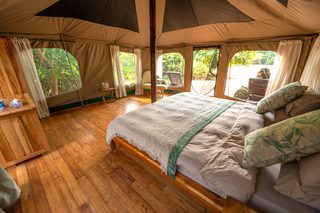
We love to stay at Manyara Green Camp – a sustainable mobile eco-camp that offers homely comfort deep in the bush. Located on the banks of the Endabash River in the south of the park, it's the perfect location for wildlife-spotting right on your doorstep. At some times of the year, the river is the only water source for miles, attracting thousands of animals to its banks.
Serengeti
Best for multi-day walks and following the Great Migration
The Serengeti is home to one of the most incredible natural wonders of the world – the Great Migration. Every year, millions of wildebeest and zebras thunder across the vast Serengeti plains on the hunt for fresh water and grazing ... as they say, the grass is always greener! Walking in the Serengeti is still relatively unusual but it is growing in popularity, so well worth experiencing it sooner rather than later. Walking allows you to access vast untouched wilderness in complete solitude and follow the wildebeest migration far away from the crowds.
Enjoy a multi-day walking safari, where you can go days without seeing a vehicle or another tourist group. Walk up gentle rolling hills, cross small streams and climb ancient granite boulders to get a better view and realise the true vastness of the wilderness. With no car engine running, you can truly appreciate the sound of thousands of wildebeest passing by.
Spend your nights in a remote, semi-permanent Serengeti walking camp in the middle of a private reserve, sleeping in tents under the starlit sky. As these camps move with the migration, you can be sure that you are maximising your chances of spotting great wildlife.
Walk, Mountain Bike and Drive Northern Tanzania. 9 days from £4,995pp.
Ngorongoro Crater
Best for panoramic crater views
Fondly referred to as the eighth wonder of the world, the Ngorongoro Crater is one of Africa’s most impressive geological features. Formed by a long-extinct volcano, the Ngorongoro Crater is a wildlife haven, with all of the Big Five being found on the crater floor.
Stay at the Highlands Lodge on the rim of the Ngorongoro Crater in one of eight domed canvas-and-glass tents with incredible panoramic views. The lodge offers a number of different walks, including hiking to the top of Olmoti for staggering views as you walk along the crater; a half-day trip to the soda lake in Empakaai Crater, where you walk on the crater floor and see the fabulous flamingos congregate; or take the opportunity to learn about Maasai culture as you walk cattle back with them to the boma at the end of the day.
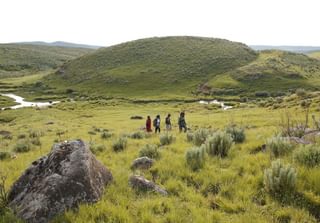
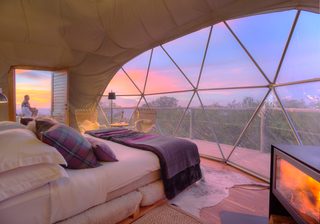
Tarangire
Best for seeing elephants in the moonlight
Tarangire National Park is the least visited of the northern parks but is famed for its large number of herbivores, including an impressive elephant population that is attracted to the permanent waters of the Tarangire River. The park is also home to more than 500 different bird species, making it a wonderful spot for birdwatching.
The southern part of the park especially is extremely remote and hard to get to, keeping this area wild and the perfect spot for a private walking safari.
During your safari, you will follow the trails that animals have left behind walking to and from watering holes. Over the years, Wayo (who lead our walking safari here and also run active safaris) have located a number of vantage points where you can sit and watch animals drinking from the waterholes undisturbed – and on a full moon you can even watch them at night.
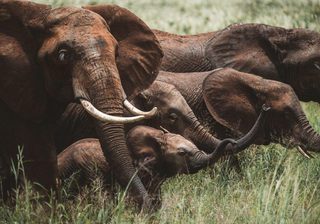
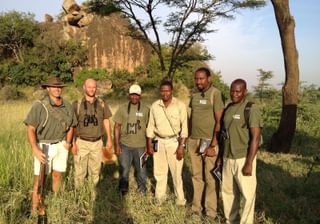
Southern Tanzania
Ruaha – best for an off-the-beaten-track experience
Ruaha National Park is still largely undiscovered and offers safari-goers the chance to truly escape the crowds – even in peak season – and discover unspoilt wilderness. Known for its large populations of elephants and wild dog, plus its impressive big cat population, more than 500 bird species have been recorded here, making it one of the best spots in Tanzania for birdwatching. It is a truly remarkable area, teeming with wildlife.
The park takes its name from the Great Ruaha River, which creates spectacular gorges as it flows along the eastern border. A dawn game walk in the dry season is a must: meander through the dry riverbeds with an expert guide, listening to fascinating stories about the local flora, fauna, insects, birds and animals.
Jongomero camp is situated 70 kms from the next camp so your safari experience is private and exclusive, with a wonderful swimming pool to relax by. If you are feeling adventurous, you can combine your walking safari with a night fly-camping where you sleep out in the open air listening to the sounds of the bush.
Explore Ruaha and Selous in luxury from £6,350pp for 11 days.
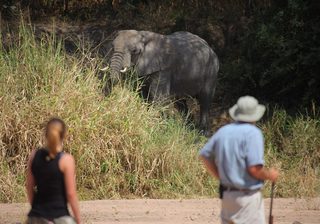
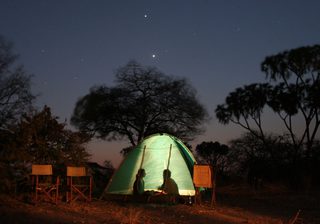
Nyerere National Park (previously Selous Game Reserve)
Best for wide-ranging safari activities
At twice the size of Belgium, Nyerere National Park in southern Tanzania is the largest game reserve in Africa. Visitor numbers are much lower than for the Serengeti, however, which ensures that you have a quieter, more exclusive safari experience. With an elephant population of 50,000 and around 5,000 leopards in the park, Selous offers some of the best game viewing experiences in Tanzania.
Stay at Rufiji River Camp to enjoy panoramic views over the water. Rufiji River Camp offers an extensive range of safari activities, including walking safaris, boat safaris and seasonal fishing, as well as 4x4 safaris.

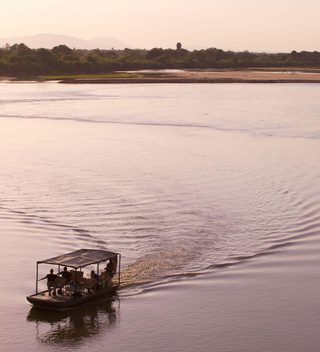
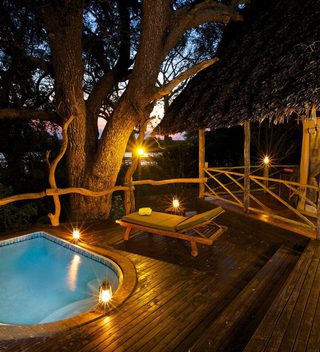
Why do a walking safari?
Arguably the purest form of safari, a walking safari gives you a completely new appreciation for your surroundings and the chance to be a part of the animal kingdom’s world.
Appreciate small details
A walking safari gives you the chance to appreciate small details that are often overlooked when driving. Notice creatures calling to one another, follow animal tracks left in the sand, watch insects buzzing and learn about the flora and fauna.
Engage all your senses
Experience a rush of adrenaline as you hear a rustle in the bush behind you (even if it turns out to be only a hare), keep your eyes sharply focused on the horizon as you look for animals and feel the wind in your hair and Savannah grass brush against your legs as you immerse yourself in nature.
Access remote areas
On foot, you can reach remote areas that are inaccessible by vehicle and escape the crowds. Having the wilderness to yourself is a true luxury and an unforgettable experience.
Stretch your legs
A walking safari makes for a welcome break from sitting in a 4x4 vehicle and even if you are only doing a short walk, the chance to stretch your legs is a most welcome change from sitting.
See animals on a level playing field
This type of safari allows you to be a participant, not just a spectator, as you see animals on their terms and at their level. It also gives you a greater perspective, allowing you to appreciate how magnificently tall a giraffe truly is!
Low impact
A walking safari is very gentle on the environment and has much less impact than large 4x4s.
Press pause
A trip of this kind is as much about quiet observation as it is about walking. Stop and listen to the birdsong or watch a family of elephants playing in the water, oblivious of your presence.
Safety first
While a walking safari is sure to give you an adrenaline buzz, safety is always taken extremely seriously. You will be walking with a qualified guard, as well as an armed ranger. Although the focus of a walking safari is to appreciate smaller animals, as well as the flora and fauna, from time to time you might come across larger animals and your guide will ensure that you are safe and well-protected in that scenario.
When to do a walking safari in Tanzania
Tanzania is huge and its sheer size means that its climate varies considerably in different parts of the country, as well as year on year. As a rule of thumb, the long dry season that lasts from June to October is generally considered the best time to walk in most areas, although other months are also fine and you can benefit from mid-season rates. We would suggest avoiding April and May due to the heavy rains that happen at this time of year.
If you are walking in the Serengeti, it’s more about where the migration is and where you can catch up with the wildlife without the crowds. Walking with a mobile camp that moves with the wildebeest will help ensure that you are in the best spots.
Walking schedule
This will depend on whether you are doing a short walk or one over several days, but walking safaris normally begin in the early morning, when it is cooler and the animals are most active. You will often enjoy a prepacked breakfast perched on top of a rock or next to a stream – trust us, enjoying bush breakfasts while admiring your vast surroundings can’t be beaten. Lunchtime and the hottest part of the day is a chance to rest, usually at camp and in the shade! You will then do a shorter walk when it is cooler, in the late afternoon, so that you can watch the sunset before returning to your camp for dinner.
Looking for some more inspiration? Take a look at our best safari holidays ideas, our favourite family safaris, our big five safari guide or our top African safari honeymoon suggestions.
If you’d like any help arranging a Tanzania walking safari, call our friendly team on 01768 603 715 and one of our experts would be happy to help you.

